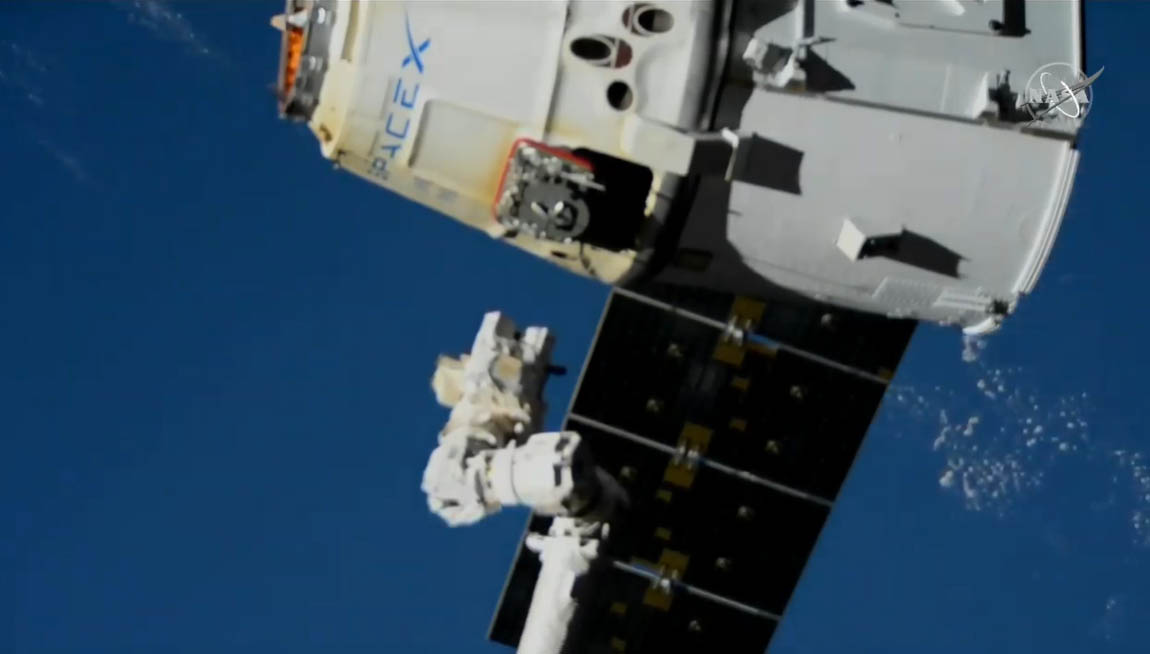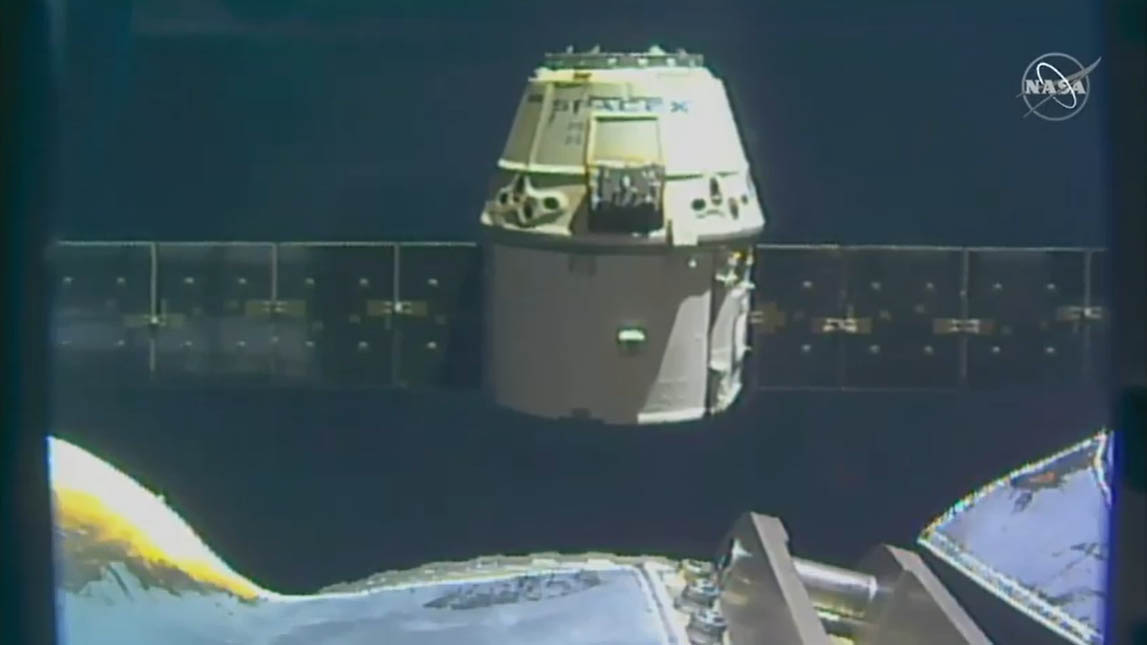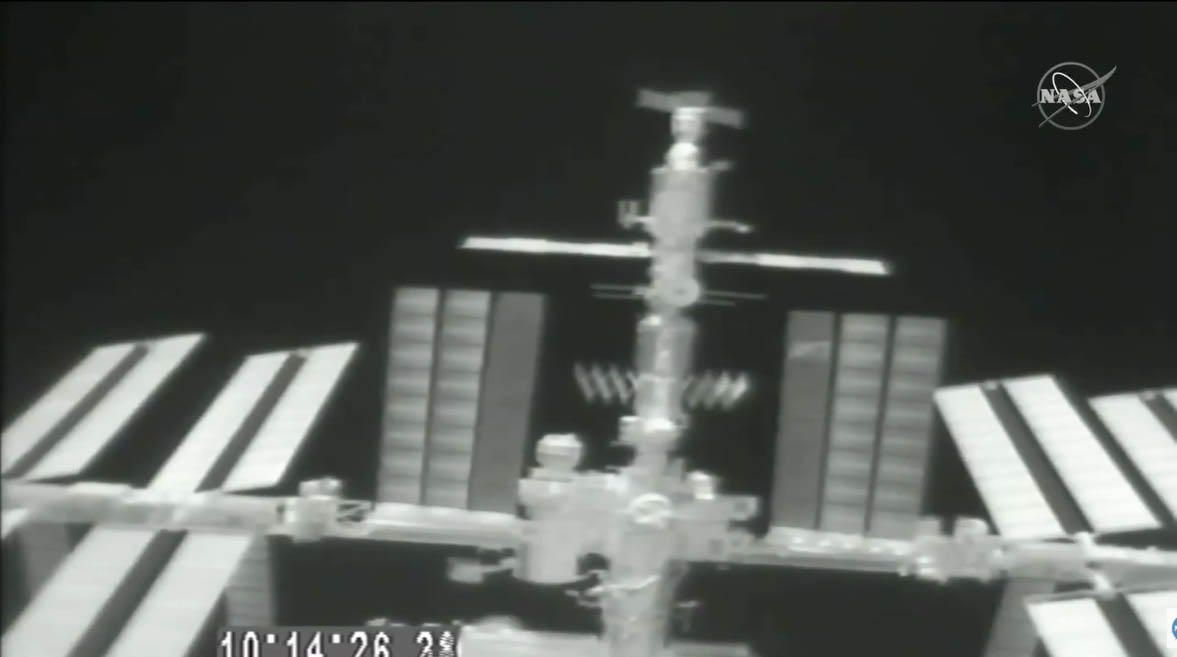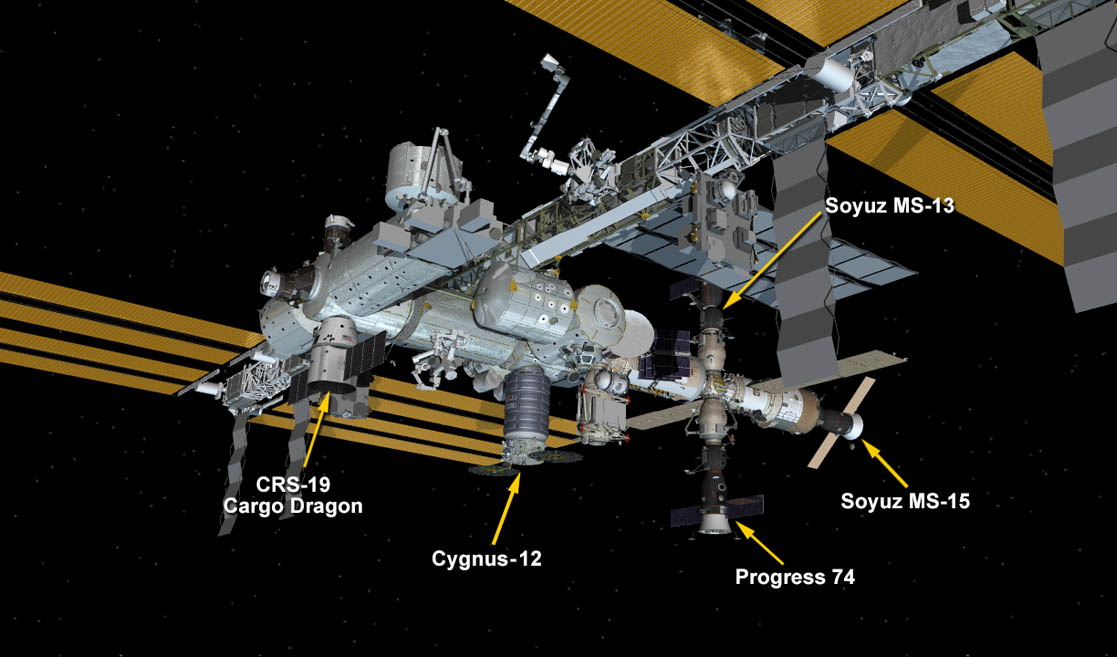SpaceX Dragon Returns to Earth After Delivering NASA Supplies to Space Station
A SpaceX Dragon spacecraft returned to Earth today (Jan. 7) after a monthlong cargo delivery trip to the International Space Station for NASA.
Astronauts on the space station released the Dragon CRS-19 spacecraft into space with the outpost's robotic arm, bidding farewell to a spacecraft that delivered more than 5,700 lbs. (2,585 kilograms) of NASA supplies last month. Dragon left the station at 5:05 a.m. EST (1005 GMT) and splashed down in the Pacific Ocean at about 10:41 a.m. EST (1541 GMT). SpaceX confirmed Dragon's successful return to Earth in a Twitter update five minutes after the scheduled splashdown.
"It's been really an honor and incredibly, incredibly rewarding to be here working with this Dragon, both for the capture and for the release," Luca Parmitano, a European Space Agency astronaut and commander of the station's current Expedition 61 crew, said as Dragon left the station today. "We know that together with Dragon we are sending down not only viable science, but also a little bit of our lives up here. And so, it's really been nice. Thank you so much."
Video: See SpaceX's Dragon CRS-19 Arrival in this Awesome Time-Lapse View

A SpaceX CRS-19 cargo ship departs the International Space Station on Jan. 7, 2020 to end the company's 19th resupply mission for NASA.

The uncrewed Dragon CRS-19 cargo ship made its third delivery mission to the space station for NASA on this flight. It previously launched the CRS-4 in 2014 and CRS-11 in 2017.

The view from SpaceX's CRS-19 cargo ship, showing the International Space Station as Dragon pulled away from the orbiting lab on Jan. 7, 2020.
Splashdown of Dragon confirmed, completing this spacecraft’s third mission to and from the @space_station!January 7, 2020
During Dragon's departure, the spacecraft's maneuvers near the station appear to have affected the solar arrays of another commercial cargo ship, the Cygnus-12 spacecraft built by Northrop Grumman, docked at an nearby port.
"Hey, we noticed that while the jets were firing for the departure burn two, the blast from the engines was shaking quite vigorously the solar panels of Cygnus-12," Parmitano radioed Mission Control as Dragon left the station.
Cygnus-12 arrived at the station in November and is parked at the station's Earth-facing port non Unity node, while Dragon was linked to an Earth-facing port on the Harmony node. The two nodes are separated by NASA's bus-size Destiny module, which is 28 feet (8.5 meters) long.
Get the Space.com Newsletter
Breaking space news, the latest updates on rocket launches, skywatching events and more!

NASA spokesperson Dan Huot of the Johnson Space Center in Houston said ground teams are monitoring the Cygnus-12 spacecraft, which has been docked to the station since November, to make sure all is well.
"They do a lot of analysis anytime vehicles are coming and going to and from the International Space Station," Huot said of NASA ground teams during live TV commentary. "So, they'll just go off and make sure that there were no impacts to the Cygnus spacecraft."
SpaceX launched Dragon to the station on Dec. 5, with the spacecraft arriving at the orbiting lab three days later. Packed among its basic supplies were more than 2,100 lbs. (952 kg) of gear for 38 different experiments, including a "mighty mice" experiment to study bone and muscle loss in space, a "robot hotel" for the outpost's two free-flying Robotic External Leak Locators and a space beer experiment by Budweiser to see how barley seeds grow in space.
SpaceX and Northrop Grumman hold mutibillion-dollar contracts to fly commercial cargo missions to the station for NASA using their Dragon and Cygnus spacecraft, respectively. The Dragon CRS-19 mission is SpaceX's 19th mission for NASA under that deal.
The CRS-19 Dragon has also visited the space station before. This mission marked the spacecraft's third mission to the space station, the most ever for a single Dragon spacecraft. SpaceX marks its veteran Dragon cargo ships with a space station image for each supply run it makes.
In addition to its uncrewed Dragon cargo missions, SpaceX has built a Crew Dragon version capable of flying astronauts for NASA. The first crewed flight of a Crew Dragon is expected to occur later this year, but only after SpaceX performs a critical In-Flight Abort test flight of the spacecraft's emergency escape system.
That abort launch test is currently scheduled for no earlier than Jan. 18, NASA officials said Monday (Jan. 6).
- See the Evolution of SpaceX's Rockets in Pictures
- SpaceX's Crew Dragon Space Capsule Explained (Infographic)
- Space Videos! See the Latest Amazing Launches and Discoveries
Email Tariq Malik at tmalik@space.com or follow him @tariqjmalik. Follow us @Spacedotcom, Facebook and Instagram.

Join our Space Forums to keep talking space on the latest missions, night sky and more! And if you have a news tip, correction or comment, let us know at: community@space.com.

Tariq is the Editor-in-Chief of Space.com and joined the team in 2001, first as an intern and staff writer, and later as an editor. He covers human spaceflight, exploration and space science, as well as skywatching and entertainment. He became Space.com's Managing Editor in 2009 and Editor-in-Chief in 2019. Before joining Space.com, Tariq was a staff reporter for The Los Angeles Times covering education and city beats in La Habra, Fullerton and Huntington Beach. In October 2022, Tariq received the Harry Kolcum Award for excellence in space reporting from the National Space Club Florida Committee. He is also an Eagle Scout (yes, he has the Space Exploration merit badge) and went to Space Camp four times as a kid and a fifth time as an adult. He has journalism degrees from the University of Southern California and New York University. You can find Tariq at Space.com and as the co-host to the This Week In Space podcast with space historian Rod Pyle on the TWiT network. To see his latest project, you can follow Tariq on Twitter @tariqjmalik.
